Eye Swelling Treatments: Comprehensive Guide to Causes, Symptoms, and Remedies
What are the common causes of eye swelling. How can you identify different types of eye swelling. What are the most effective treatments for swollen eyelids. How can you prevent eye swelling and related complications.
Understanding the Anatomy of Eye Swelling
Eye swelling, medically known as periorbital edema, occurs when fluid accumulates in the tissues surrounding the eyes. This condition can affect one or both eyes and may involve the upper eyelid, lower eyelid, or both. To comprehend eye swelling better, it’s crucial to understand the eye’s anatomy and the structures that can be affected.
Key Components of the Eye and Eyelid
- Eyelids: Protective coverings that shield the eyes
- Conjunctiva: The thin membrane that covers the white part of the eye and inner eyelid
- Tear ducts: Small channels that drain tears from the eyes
- Meibomian glands: Oil-producing glands in the eyelids
- Lacrimal glands: Glands that produce tears
When any of these structures become irritated, infected, or inflamed, swelling can occur. Understanding the anatomy helps in identifying the specific cause and determining the most appropriate treatment.
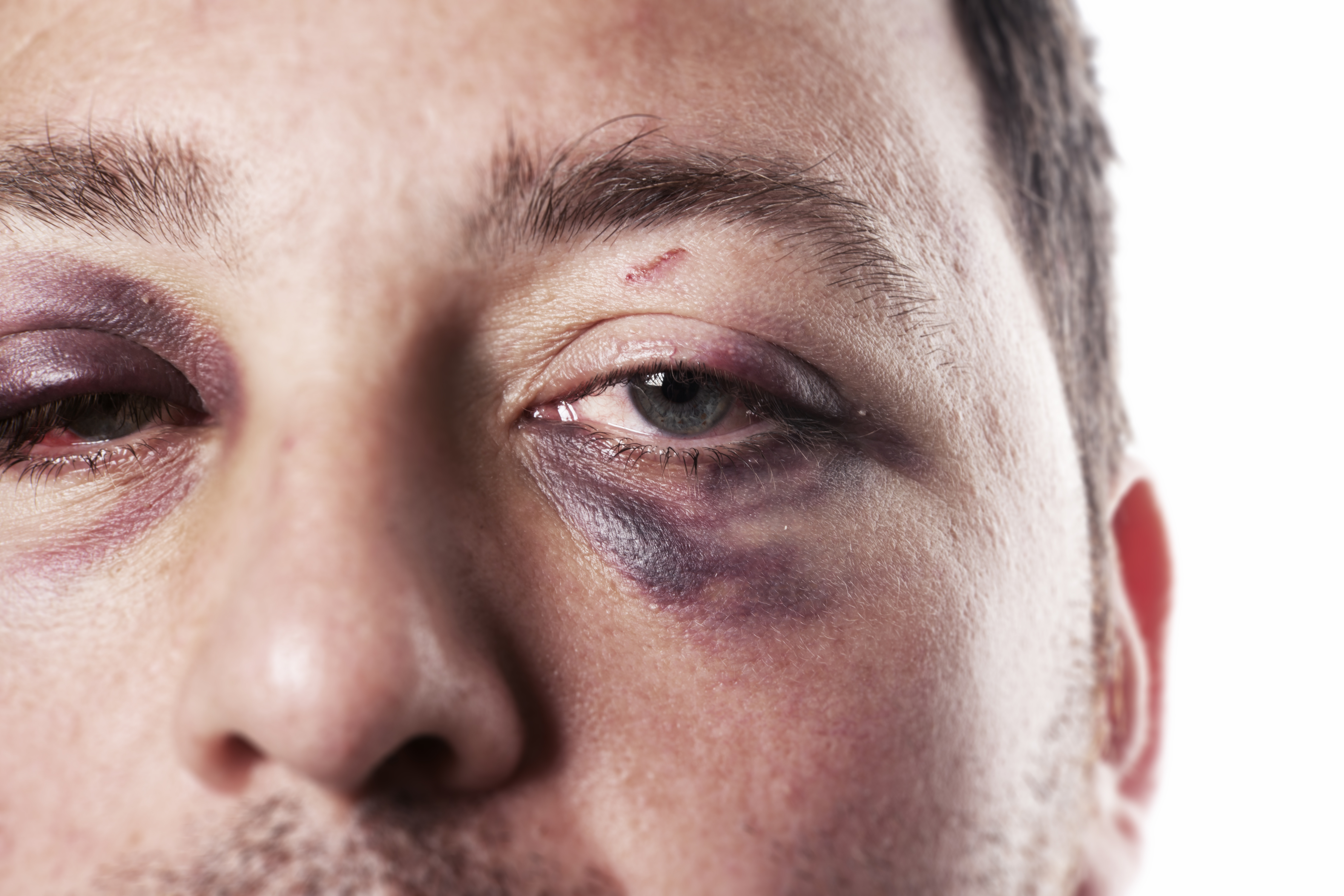
Common Causes of Eye Swelling: From Styes to Systemic Conditions
Eye swelling can result from various factors, ranging from minor irritations to more serious underlying health conditions. Identifying the cause is crucial for effective treatment. Here are some of the most common causes:
Styes and Chalazia: Small but Troublesome
Styes and chalazia are among the most frequent causes of localized eye swelling. How do they differ? A stye is an acute bacterial infection of an oil gland or hair follicle in the eyelid, while a chalazion is a chronic, non-infectious blockage of an oil gland.
Stye Characteristics:
- Appears as a red, painful bump on the eyelid
- Often contains pus
- Typically resolves within 1-2 weeks
Chalazion Characteristics:
- Presents as a firm, painless lump in the eyelid
- May grow larger over time
- Can persist for several weeks or months
Allergic Reactions: When Your Eyes Overreact
Allergic reactions are a common cause of eye swelling, especially during certain seasons or in specific environments. What triggers these reactions? Allergens such as pollen, dust mites, pet dander, or certain foods can cause the body to release histamines, leading to swelling and other symptoms.
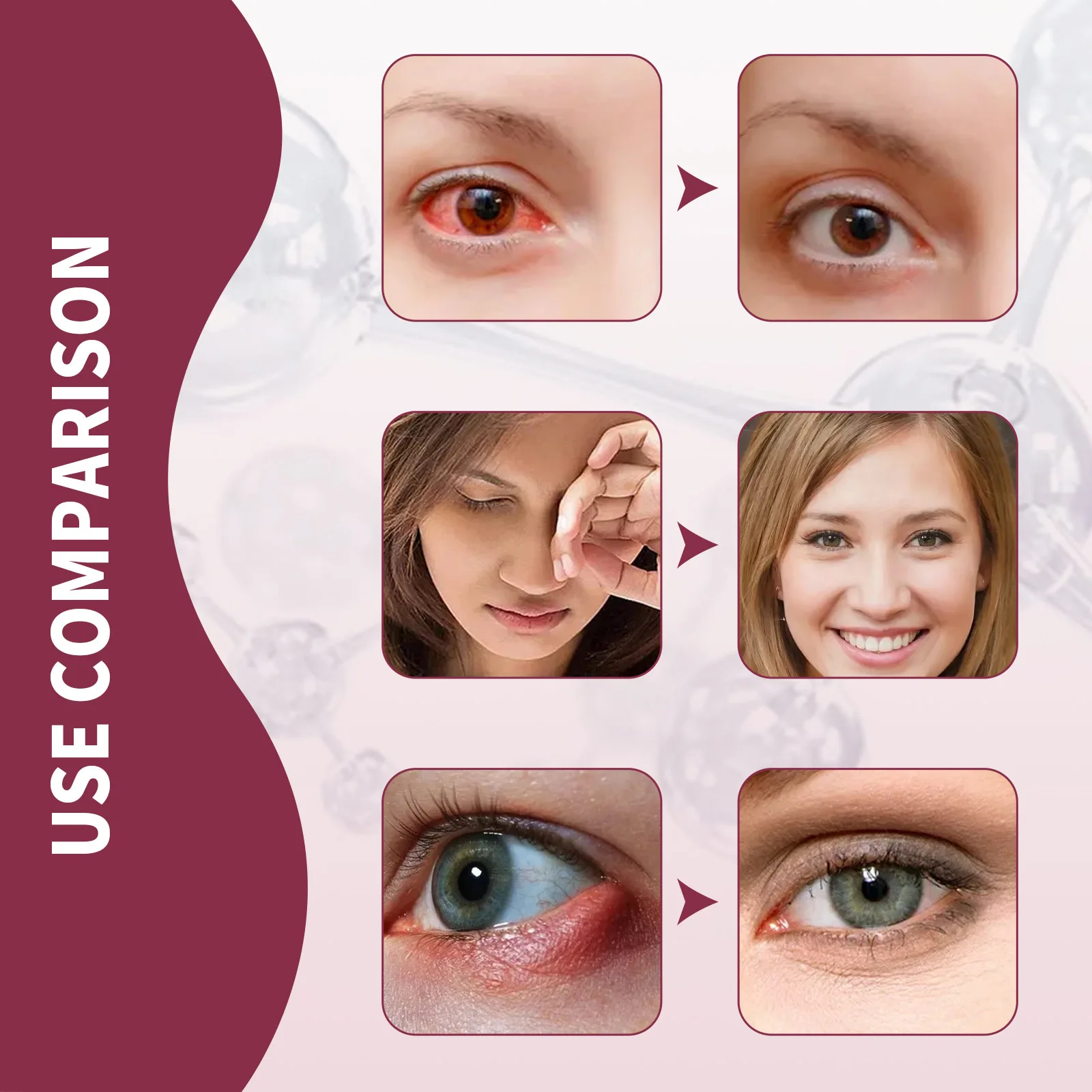
Signs of an allergic reaction affecting the eyes include:
- Itching and redness
- Watery eyes
- Swollen eyelids
- Sensitivity to light
Infections: Bacterial and Viral Culprits
Various infections can cause eye swelling, with conjunctivitis (pink eye) being one of the most common. What are the different types of eye infections? They can be bacterial, viral, or fungal in nature.
Common Eye Infections:
- Conjunctivitis (pink eye)
- Blepharitis (inflammation of the eyelid margins)
- Orbital cellulitis (infection of the tissues around the eye)
Systemic Conditions: When Eye Swelling Signals Something More
In some cases, eye swelling can be a symptom of a broader health issue. What systemic conditions can cause eye swelling? Conditions such as thyroid disorders, kidney problems, and cardiovascular diseases can all manifest with periorbital edema.
Systemic Conditions Associated with Eye Swelling:
- Graves’ disease (an autoimmune thyroid disorder)
- Nephrotic syndrome (a kidney disorder)
- Congestive heart failure
- Liver cirrhosis
Diagnosing Eye Swelling: From Self-Assessment to Medical Evaluation
Proper diagnosis is crucial for effective treatment of eye swelling. While some cases can be self-diagnosed, others require professional medical evaluation. How can you determine when to seek medical attention for eye swelling?

Self-Assessment: Know When to Worry
For minor cases of eye swelling, self-assessment can be sufficient. Consider the following factors:
- Duration: Has the swelling persisted for more than a few days?
- Severity: Is the swelling accompanied by severe pain or vision changes?
- Associated symptoms: Are there other symptoms like fever or difficulty breathing?
If you answer yes to any of these questions, it’s advisable to seek medical attention.
Professional Diagnosis: What to Expect
When you visit a healthcare provider for eye swelling, they will typically perform the following:
- Medical history review
- Physical examination of the eyes and surrounding area
- Visual acuity test
- Possible imaging tests (CT scan or MRI) for severe cases
In some cases, additional tests such as allergy testing or blood work may be necessary to determine the underlying cause.
Treatment Options: From Home Remedies to Medical Interventions
The treatment for eye swelling varies depending on the underlying cause. What are the most effective treatments for different types of eye swelling?

Home Remedies: First Line of Defense
For minor cases of eye swelling, home remedies can often provide relief:
- Cold compresses: Apply for 10-15 minutes several times a day to reduce swelling
- Warm compresses: Effective for styes and chalazia to promote drainage
- Over-the-counter antihistamines: For allergy-related swelling
- Gentle cleansing: Use mild baby shampoo to clean eyelids for conditions like blepharitis
Medical Treatments: When Professional Help is Needed
For more severe or persistent cases, medical treatments may include:
- Prescription eye drops: Antibiotic or anti-inflammatory
- Oral medications: Antibiotics for infections, steroids for severe inflammation
- Minor surgical procedures: For draining styes or chalazia
- Treatment of underlying conditions: For systemic causes of eye swelling
Prevention Strategies: Keeping Your Eyes Healthy and Swelling-Free
While not all cases of eye swelling can be prevented, there are steps you can take to reduce your risk. How can you protect your eyes from swelling and related complications?
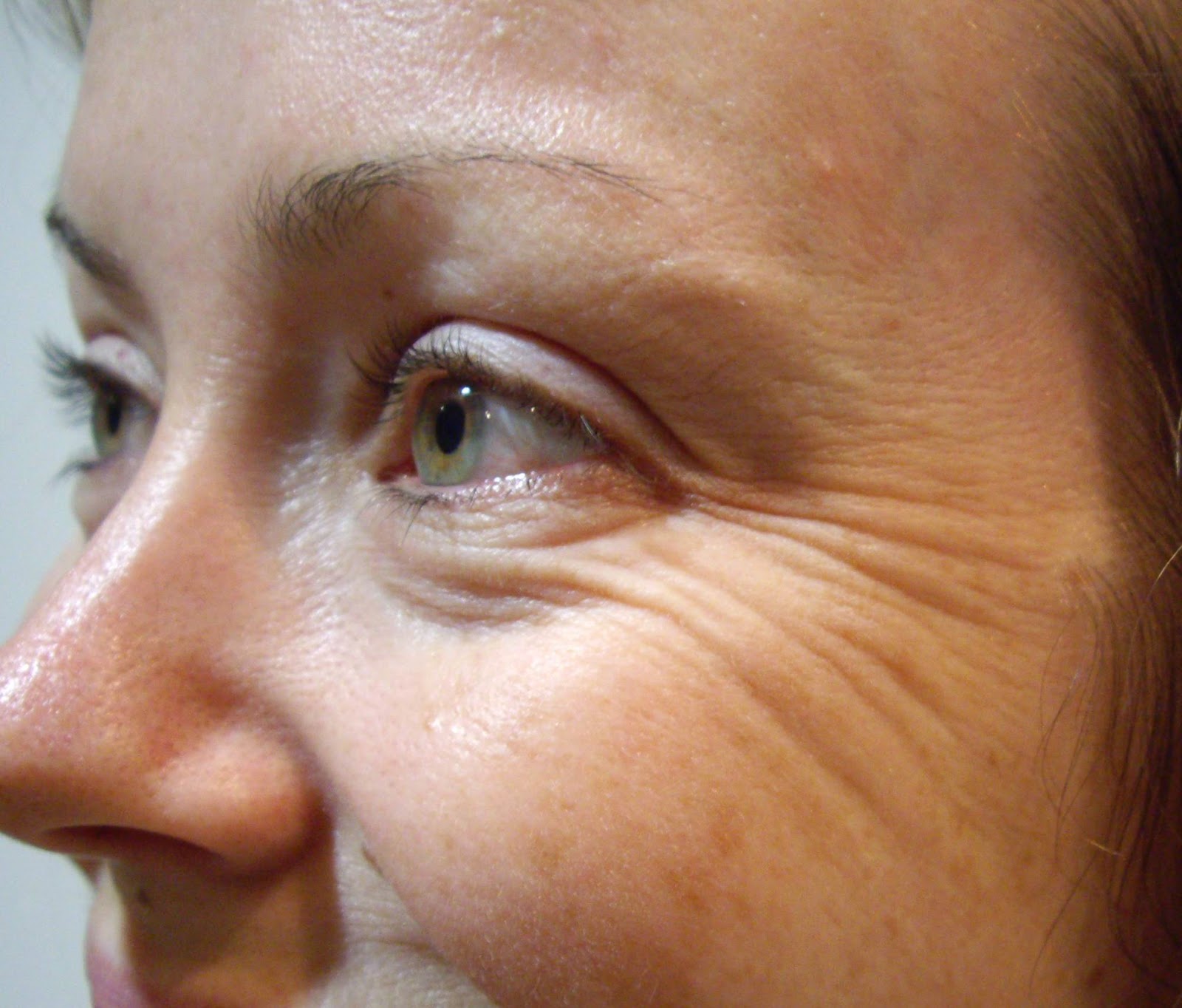
Hygiene Habits: The Foundation of Eye Health
Maintaining good eye hygiene is crucial for preventing many causes of eye swelling:
- Wash hands frequently, especially before touching your eyes or applying eye makeup
- Remove eye makeup before going to bed
- Clean contact lenses properly and replace them as recommended
- Avoid sharing personal items like towels or makeup
Lifestyle Modifications: Supporting Overall Eye Health
Certain lifestyle changes can contribute to better eye health and reduce the risk of swelling:
- Stay hydrated to maintain proper fluid balance
- Get adequate sleep to allow your eyes to rest and recover
- Manage stress, which can contribute to eye strain and inflammation
- Wear protective eyewear when engaging in activities that may expose your eyes to irritants or injury
Allergen Management: Reducing Exposure and Reactivity
For those prone to allergic reactions, managing allergen exposure is key:
- Use air purifiers to reduce indoor allergens
- Keep windows closed during high pollen seasons
- Wash bedding regularly in hot water to eliminate dust mites
- Consider allergy shots or immunotherapy for severe allergies
When to Seek Emergency Care: Recognizing Serious Symptoms
While most cases of eye swelling are benign, some situations require immediate medical attention. What are the red flags that indicate a need for emergency care?

Symptoms Requiring Urgent Attention
Seek emergency care if you experience any of the following in conjunction with eye swelling:
- Sudden, severe pain in or around the eye
- Significant vision changes or loss of vision
- Signs of anaphylaxis, such as difficulty breathing or swelling of the throat
- High fever accompanied by eye swelling
- Protrusion of the eyeball
- Inability to move the eye or severe restriction of eye movement
These symptoms could indicate serious conditions such as orbital cellulitis, severe allergic reactions, or acute glaucoma, which require immediate medical intervention.
Long-Term Management: Living with Chronic Eye Conditions
For individuals with chronic conditions that cause recurrent eye swelling, long-term management strategies are essential. How can you effectively manage ongoing eye health issues?
Regular Check-ups: The Importance of Monitoring
Scheduling regular eye exams is crucial for those with chronic eye conditions. These check-ups allow for:
- Early detection of potential complications
- Adjustment of treatment plans as needed
- Monitoring of overall eye health
- Discussion of any new concerns or symptoms
Medication Management: Staying on Track
For those requiring long-term medication for eye conditions:

- Adhere to prescribed medication schedules
- Understand potential side effects and report any concerns to your healthcare provider
- Keep track of medication efficacy and discuss any changes in symptoms
- Explore options for simplified regimens or extended-release formulations when appropriate
Lifestyle Adaptations: Accommodating Your Condition
Living with a chronic eye condition may require certain lifestyle adjustments:
- Modify work environments to reduce eye strain
- Incorporate regular breaks during screen time
- Use protective eyewear appropriate for your condition
- Develop a support network for managing your eye health
By implementing these long-term management strategies, individuals with chronic eye conditions can maintain better eye health and quality of life.
Causes, treatments, pictures, and prevention
A swollen eyelid can happen for many reasons. It can indicate an infection or other problem that needs medical attention. Treatment options will depend on the cause.
Possible causes include:
- a stye or chalazion
- an allergy
- an infection, such as pink eye or blepharitis
- a health condition, such as Graves disease or liver failure
- a blocked tear duct
In this article, learn more about these and some other causes of a swollen eyelid, and get some tips on how to treat and prevent each cause.
The following pictures may help identify some causes of a swollen eyelid. Below is more information about 13 different causes.
A stye (hordeolum) is an infection of a gland in the eyelid. It is like a small abscess.
Symptoms affect the rim of the eye, often by the root of an eyelash.
A person may notice:
- swelling
- pain
- a feeling of scratchiness
- a red bump like a pimple, usually with a small spot of pus in the middle
- crusting due to discharge
Treatment
A stye often needs no treatment. It will usually resolve on its own in 1–2 weeks.
It will usually resolve on its own in 1–2 weeks.
Here are some tips for managing at home:
- Apply warm compresses for 5–10 minutes, three to four times a day to relieve pain.
- Avoid eye products, including makeup and eye creams, until the stye disappears.
- Avoid wearing contact lenses until the stye goes.
- Use pain relief medication if necessary, such as ibuprofen.
- Never pop a stye as this can spread the infection and damage the eye.
A doctor may prescribe antibiotics.
Prevention
It is not always possible to prevent a stye, but the following tips may help:
- Remove all makeup and wash the face before going to sleep.
- Avoid sharing personal items, such as towels, with someone who has a stye.
- Avoid rubbing or touching the eyes.
- If a person needs to put in contact lenses or touch their eyes, they should wash their hands first.
A chalazion forms a lump in the eyelid. It can look like a stye, but it is not an infection.
It happens when an oil gland in the eyelid gets clogged, and oil accumulates behind the blockage.
It feels like a hard lump. A person may also notice:
- swelling, which may affect a whole eyelid
- redness, in some cases
- a hard lump
- tenderness, in some cases
- blurry vision
A person may have more than one chalazion, known as chalazia, and the bumps can grow quite large. They usually resolve on their own after several days or weeks.
People with blepharitis or rosacea may be more prone to chalazia.
Treatment
Options include:
- applying warm compresses for 10–15 minutes three to five times a day to relieve discomfort and encourage the chalazion to drain
- using anti-inflammatory eye drops
- having steroid injections, in some cases
- minor surgery may be necessary to drain a chalazion
If the bump does not go away after a few days or there are other signs of an infection, such as a fever, a person should contact an eye doctor.
Prevention
A person cannot always avoid chalazia, but they can try:
- cleansing the eyelids daily with baby shampoo or eyelid cleansing wipes
- taking an omega-3 or flaxseed supplement
- asking a doctor about topical or oral antibiotics if chalazia occur often
An allergic reaction to dust, pollen, and other common allergens can cause eye irritation and swelling.
Symptoms include:
- swelling
- itching and burning
- redness
- watery eyes
- a stuffy or runny nose
- sneezing
Treatment
Ways of managing symptoms include:
- applying cool compresses to relieve itching and swelling
- taking antihistamines, such as diphenhydramine (Benadryl)
- using over-the-counter eye drops to reduce dryness and itchiness
- oral prescription medication and eye drops
Prevention
The best way to prevent a reaction is to avoid exposure to known allergens.
People with a seasonal allergy can:
- monitor pollen counts
- wear glasses to prevent contact with pollen
- stay indoors, when possible, when pollen is high
- ask a doctor about allergy shots and other preventive medication
A person with a known allergy should carry an autoinjector in case of a severe reaction.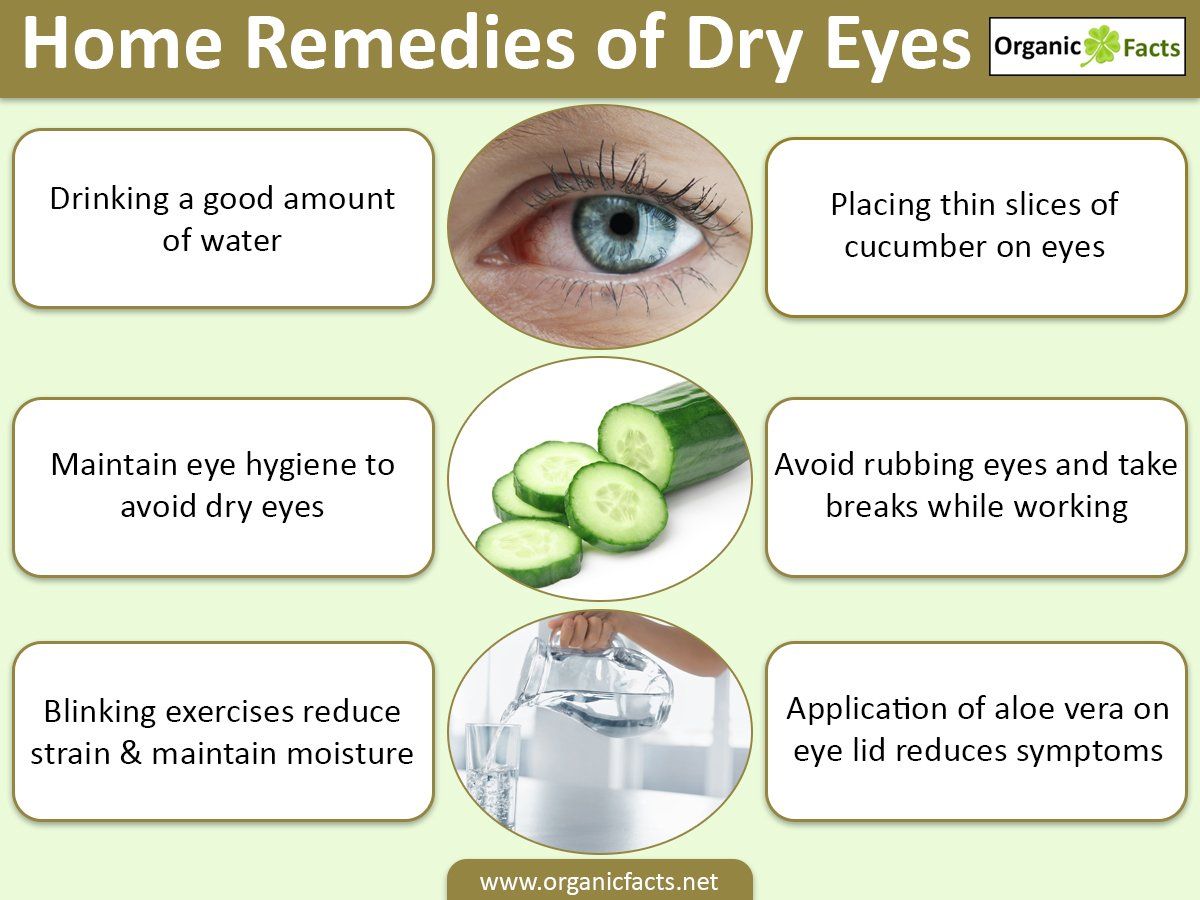 Severe swelling and breathing problems may be signs of anaphylaxis, a life threatening condition that needs emergency medical care.
Severe swelling and breathing problems may be signs of anaphylaxis, a life threatening condition that needs emergency medical care.
Anaphylaxis is a severe allergic reaction that can be life threatening. The symptoms develop suddenly and include:
- hives
- swelling of the face or mouth
- wheezing
- fast, shallow breathing
- a fast heart rate
- clammy skin
- anxiety or confusion
- dizziness
- vomiting
- blue or white lips
- fainting or loss of consciousness
If someone has these symptoms:
- Check whether they are carrying an epinephrine pen. If they are, follow the instructions on the side of the pen to use it.
- Dial 911 or the number of the nearest emergency department.
- Lay the person down from a standing position. If they have vomited, turn them onto their side.
- Stay with them until the emergency services arrive.
Some people may need more than one epinephrine injection.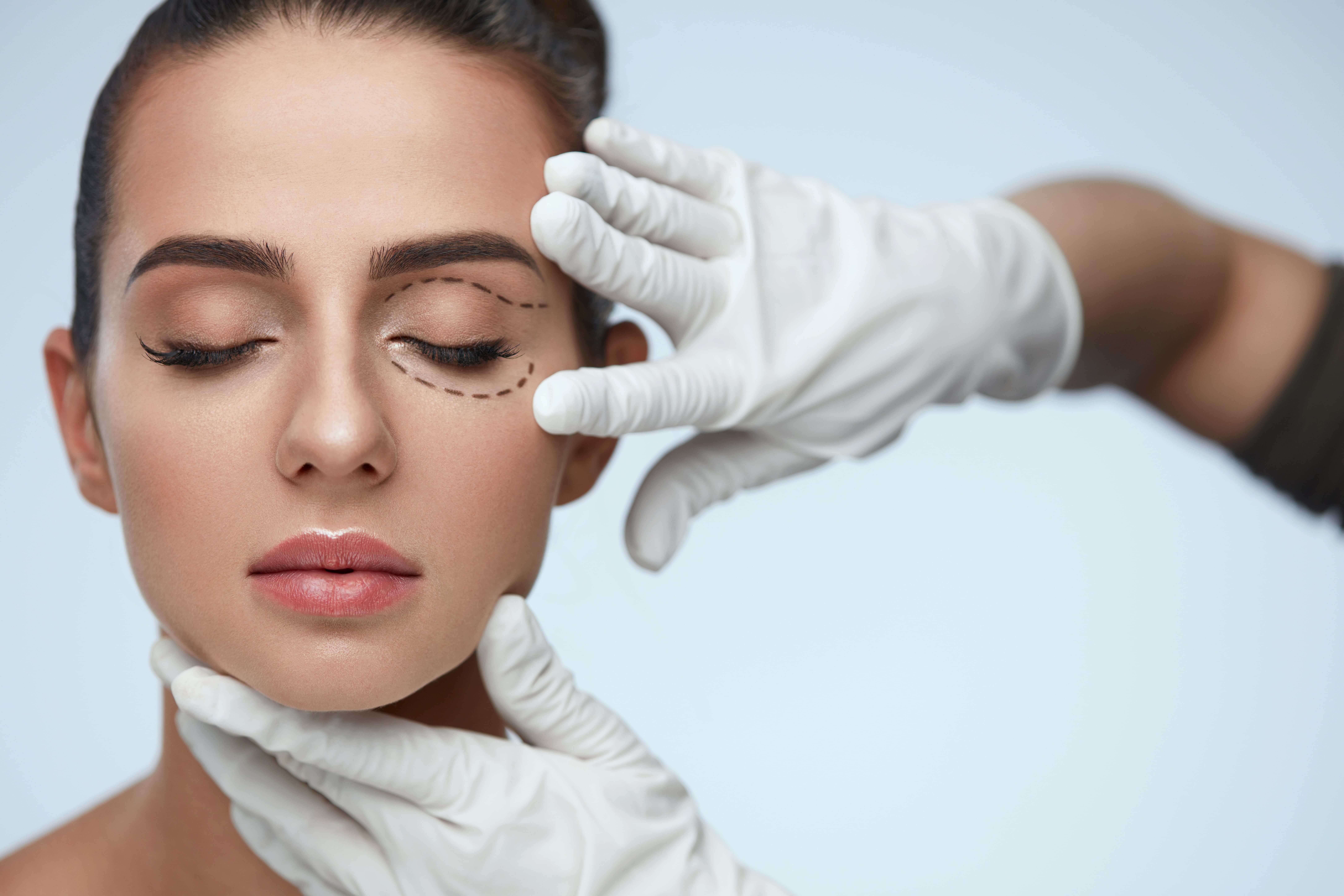 If the symptoms do not improve in 5–15 minutes, or they come back, use a second pen if the person has one.
If the symptoms do not improve in 5–15 minutes, or they come back, use a second pen if the person has one.
Was this helpful?
A person may have “bags under the eyes” for many reasons, including genetic factors. However, a lack of sleep and fatigue can make them appear more pronounced.
Treatment
Applying a cold compress while sitting upright may help relieve symptoms.
Prevention
The following tips may help prevent puffy eyes after sleeping:
- getting enough sleep
- sleeping with the head slightly raised
- limiting salt intake in the diet
- avoiding drinking liquids before sleeping
- quitting or avoiding smoking
Water retention overnight can also affect the eyelids. It can make them look swollen and puffy in the morning, particularly after not sleeping well.
Peripheral edema happens when the body is unable to remove fluid from parts of the body such as the hands, feet, and eyelids. Periorbital edema is when fluid collects around the eyes.
It can be a sign of many health conditions, such as:
- thyroid problems
- kidney or liver disease
- heart failure
- obstructive sleep apnea
- lymphedema
- the use of some drugs
Anyone who has concerned about fluid retention in the eyelids or elsewhere should seek medical advice.
Treatment
Treatment will depend on the cause but may include diuretics, pills that help the body remove fluid.
Prevention
It is not always possible to prevent fluid retention, but here are some ways of reducing the risk of heart disease and other conditions that can cause it:
- following a varied diet with plenty of fruits and vegetables
- limiting salt intake
- having regular exercise
- seeking medical help if symptoms arise that could indicate a problem
- following a doctor’s advice on treatment
Crying can lead to puffiness around the eyes.
The eyes produce tears:
- to lubricate the cornea
- to wash away irritants, for example, dust or onion fumes
- in response to emotional triggers, such as joy or sadness
If the person produces a lot of tears, the lacrimal drainage system, which usually absorbs them, may be unable to cope. This can lead to puffiness.
This can lead to puffiness.
Treatment
A cool compress may help soothe discomfort after crying.
Prevention
If a person finds they are crying more than usual or if crying or sadness is affecting their daily life, they may wish to seek medical advice.
Counseling can help manage depression, grief, anxiety, and other emotional factors that can lead to crying.
Here, learn more about puffy eyes from crying and what to do if they happen.
Makeup and skin care products can cause irritation, swelling, and puffiness in the eyelids for many reasons, for instance, if:
- they contain allergens or irritants
- the person does not remove them before sleeping
- products are not suitable for use around the eyes
- bacteria have developed over time, for example, on mascara
Treatment
Artificial tears can help soothe discomfort, if swelling occurs when using cosmetics.
A person should seek medical advice if symptoms continue or worsen.
Prevention
To prevent inflammation due to cosmetics, a person should:
- take care to avoid contact between makeup and the eyes
- monitor for sensitivity reactions and introduce new products one at a time
- remove all makeup before sleeping
- choose good quality makeup that is fragrance-free
- replace all eye makeup every 3 months
- avoid sharing products with other people
What is toxic makeup?
Orbital cellulitis is a serious infection that occurs in the bony eye socket, known as the orbit. The most common cause is a bacterial infection of the nasal and sinus passages, or rhinosinusitis. But, it can result from surgery, an immune problem, and other causes.
It can lead to:
- swelling
- redness
- pain, especially with eye movement
- paralysis of the muscles that control the eye
It is essential to seek medical help as soon as symptoms appear. Complications include abscesses, vision loss, and a spread of infection to other areas.
Treatment
A doctor will prescribe antibiotics, possibly for 2–3 weeks or longer.
If an abscess develops and causes severe symptoms, a person may need surgery.
Prevention
People can reduce the risk of severe bacterial infections and their complications by:
- washing their hands regularly
- staying away from other people who have an infection
- seeking help as soon as the symptoms of infection appear, such as a fever
Graves’ disease is an autoimmune disorder that affects the thyroid gland. It can impact the skin, the eyes, and other organs.
Eye symptoms include:
- swollen eyelids
- eye pain
- redness in the conjunctiva
- double vision
- eyelid retraction, where it seems that the eyelids are pulled back
Treatment
Treatment for eye problems related to Graves’ disease will depend on the severity.
They include:
- oral steroids
- other medications, such as rituximab, a monoclonal antibody
- artificial tears
- focal radiation therapy for the eye socket
- surgery, in some cases
Prevention
Factors that may increase the risk of Graves’ disease are:
- a family history of the disease
- smoking
- stress
- infection
- exposure to iodine
- having given birth
- receiving highly active antiretroviral therapy, a treatment for some immune conditions
Quitting smoking may help reduce the risk.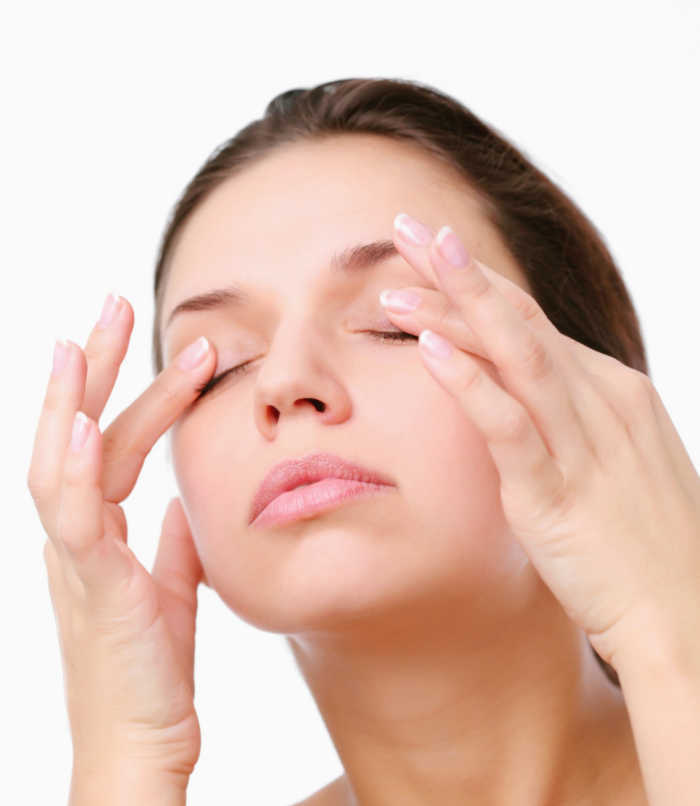
There are many types of herpes virus, and some can cause infections in the eye. Ocular herpes simplex can lead to various eye infections with a range of symptoms.
These can affect the eyelids and other parts of the eye and include:
- irritation and redness
- inflammation of the cornea, the outer cover of the eye
- ulcers of the conjunctiva and cornea
- loss of sensation in the cornea
An initial infection often occurs in children under 5 years of age, but the virus remains in the body and symptoms can recur later.
Treatment
A doctor will take an eye swab to check for the herpes virus.
They may prescribe:
- eyedrops containing antibiotics, steroids, or both
- intravenous medication, in some cases
- lubricating eye drops to help manage dry eye
- antiretroviral therapy to prevent recurrences and complications
- surgery, in some cases
Prevention
The herpes simplex virus is very common, and infection is hard to prevent.
Adults can help protect newborns by avoiding kissing them on the mouth.
Some people may need long-term antiretroviral drugs to manage the virus and help prevent a recurrence.
Blepharitis is an inflammation of the margins of the eyelids. It can result from a bacterial or viral infection or exposure to an allergen. Some people experience it only once, but it is usually a long-term condition in which symptoms improve and then flare up again.
Blepharitis can affect the eyelids in the following ways:
- inflammation
- burning
- itching
- crusting
- ulceration, in some cases
- dandruff-like flakes around their eyelashes
- blurred vision
- feeling that something is in the eye
- loss of eyelashes
Treatment
A person should do the following two to four times per day during a flare to keep the eyelids clean:
- Apply warm, wet compresses to the eyes for 5–10 minutes to soften debris and dilate the oil glands that line the eyelids.

- Wash the eyelid margins gently with a cotton bud soaked in water with a little baby shampoo.
- Gently massage the eyelids, making circular movements with a cotton bud or fingertip, to stimulate the oil glands.
A doctor may also recommend:
- antibiotic cream to apply to the eyelid
- topical steroids
- a tea tree oil eyelid scrub
- newer therapies, such as pulsation therapy, which uses heat to help remove debris from the oil glands
Prevention
It is not always possible to avoid blepharitis.
Options include:
- avoiding triggers that cause or worsen symptoms
- limiting the use of makeup
- regularly carrying out the hygiene steps above to prevent recurrence in people with chronic blepharitis
When a tear duct is blocked, the eye cannot fully drain tears. According to the American Academy of Ophthalmology, 20% of newborns have a blocked tear duct, but it usually resolves in 4–6 months. In adults, it may stem from an infection, tumor, injury, or other cause.
In adults, it may stem from an infection, tumor, injury, or other cause.
Symptoms include:
- inflammation, especially in the inner corner of the eye
- discharge
- crusty eyelashes
- blurred vision
- traces of blood in tears
- a fever
- frequent infections
Treatment
Often, a blocked duct will open without intervention.
For a newborn, a doctor may teach a caregiver how to do a special massage to encourage the duct to open.
If the duct does not open, a brief duct probing procedure may be necessary to restore drainage.
Prevention
It is not possible to prevent a blocked tear duct. However, if symptoms worsen or there are signs of an infection, such as a fever, they should seek medical help.
Conjunctivitis, or pink eye, is an inflammation of the conjunctiva. This is the clear, thin tissue that lines the eyelid and eyeball.
Possible causes include:
- a viral, bacterial, or fungal infection
- an allergic or sensitivity reaction
- exposure to toxins or irritants
A person may notice:
- swollen eyelids
- a pink or red eyeball
- itching
- pain
- discharge
Treatment
Conjunctivitis usually resolves in 1–2 weeks but may take longer. Some people have chronic conjunctivitis, which lasts longer than 4 weeks.
Some people have chronic conjunctivitis, which lasts longer than 4 weeks.
Tips for managing pink eye at home include:
- applying cold compresses to relieve discomfort
- using artificial tears
- keeping the eye clean and free of makeup
- avoiding rubbing or touching the eye
- washing the hands frequently to prevent the spread of the infection
The person should see a doctor if:
- symptoms get worse
- the pain becomes severe
- pink eye does not clear up in 2 weeks
The doctor may prescribe:
- antibiotic drops or ointments, in the case of a bacterial infection
- antiviral therapy, in some cases
- topical antihistamines, if it is due to an allergy or irritant
Prevention
Here are some tips for preventing conjunctivitis and other eye infections:
- avoiding touching the eyes, and washing the hands first if it is necessary
- replacing all eye makeup after 3 months
- avoiding sharing makeup and personal items, such as towels, with other people
Here are some questions people often ask about a swollen eyelid.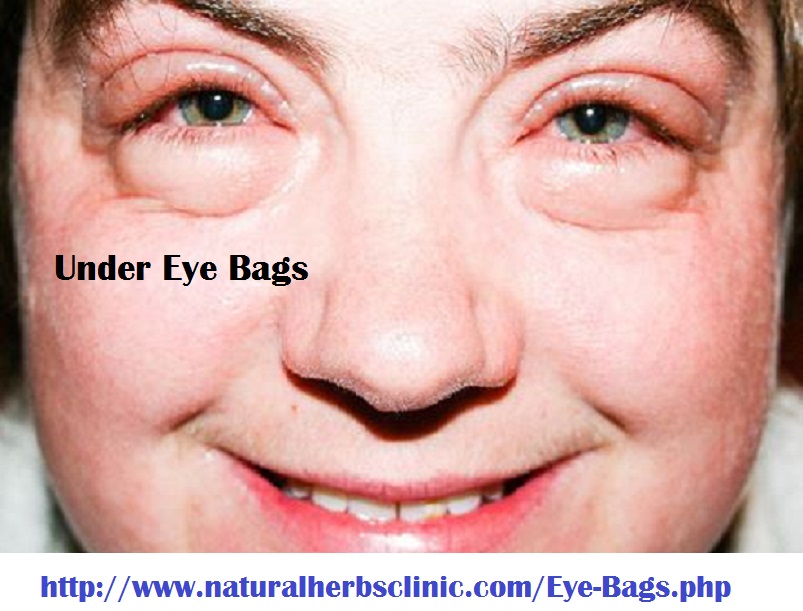
When should a person see a doctor for a swollen eyelid?
People should see a doctor if they have a fever or signs of an infection, if there is pain when shifting eye gaze, if symptoms are severe or worsening, if symptoms persist longer than 48-72 hours, or if their vision has changed.
How do you treat a swollen eyelid?
The treatment will depend on the cause. A doctor can advise on a suitable approach.
Is a warm or cold compress better?
In some cases, such as after crying or having an allergic reaction, a cool compress wrapped in a cloth may help reduce swelling. Other conditions, such as a chalazion, may benefit from a warm compress.
A swollen eyelid can happen for many reasons, ranging from tiredness to an infection. If symptoms are severe, persistent, or could indicate an infection, the person should seek medical help.
Some eye conditions can lead to severe complications, including vision loss.
If a person is unsure, they should never hesitate to seek medical consultation to protect their health.
Read the article in Spanish
Causes, treatments, pictures, and prevention
A swollen eyelid can happen for many reasons. It can indicate an infection or other problem that needs medical attention. Treatment options will depend on the cause.
Possible causes include:
- a stye or chalazion
- an allergy
- an infection, such as pink eye or blepharitis
- a health condition, such as Graves disease or liver failure
- a blocked tear duct
In this article, learn more about these and some other causes of a swollen eyelid, and get some tips on how to treat and prevent each cause.
The following pictures may help identify some causes of a swollen eyelid. Below is more information about 13 different causes.
A stye (hordeolum) is an infection of a gland in the eyelid. It is like a small abscess.
Symptoms affect the rim of the eye, often by the root of an eyelash.
A person may notice:
- swelling
- pain
- a feeling of scratchiness
- a red bump like a pimple, usually with a small spot of pus in the middle
- crusting due to discharge
Treatment
A stye often needs no treatment. It will usually resolve on its own in 1–2 weeks.
It will usually resolve on its own in 1–2 weeks.
Here are some tips for managing at home:
- Apply warm compresses for 5–10 minutes, three to four times a day to relieve pain.
- Avoid eye products, including makeup and eye creams, until the stye disappears.
- Avoid wearing contact lenses until the stye goes.
- Use pain relief medication if necessary, such as ibuprofen.
- Never pop a stye as this can spread the infection and damage the eye.
A doctor may prescribe antibiotics.
Prevention
It is not always possible to prevent a stye, but the following tips may help:
- Remove all makeup and wash the face before going to sleep.
- Avoid sharing personal items, such as towels, with someone who has a stye.
- Avoid rubbing or touching the eyes.
- If a person needs to put in contact lenses or touch their eyes, they should wash their hands first.
A chalazion forms a lump in the eyelid. It can look like a stye, but it is not an infection.
It happens when an oil gland in the eyelid gets clogged, and oil accumulates behind the blockage.
It feels like a hard lump. A person may also notice:
- swelling, which may affect a whole eyelid
- redness, in some cases
- a hard lump
- tenderness, in some cases
- blurry vision
A person may have more than one chalazion, known as chalazia, and the bumps can grow quite large. They usually resolve on their own after several days or weeks.
People with blepharitis or rosacea may be more prone to chalazia.
Treatment
Options include:
- applying warm compresses for 10–15 minutes three to five times a day to relieve discomfort and encourage the chalazion to drain
- using anti-inflammatory eye drops
- having steroid injections, in some cases
- minor surgery may be necessary to drain a chalazion
If the bump does not go away after a few days or there are other signs of an infection, such as a fever, a person should contact an eye doctor.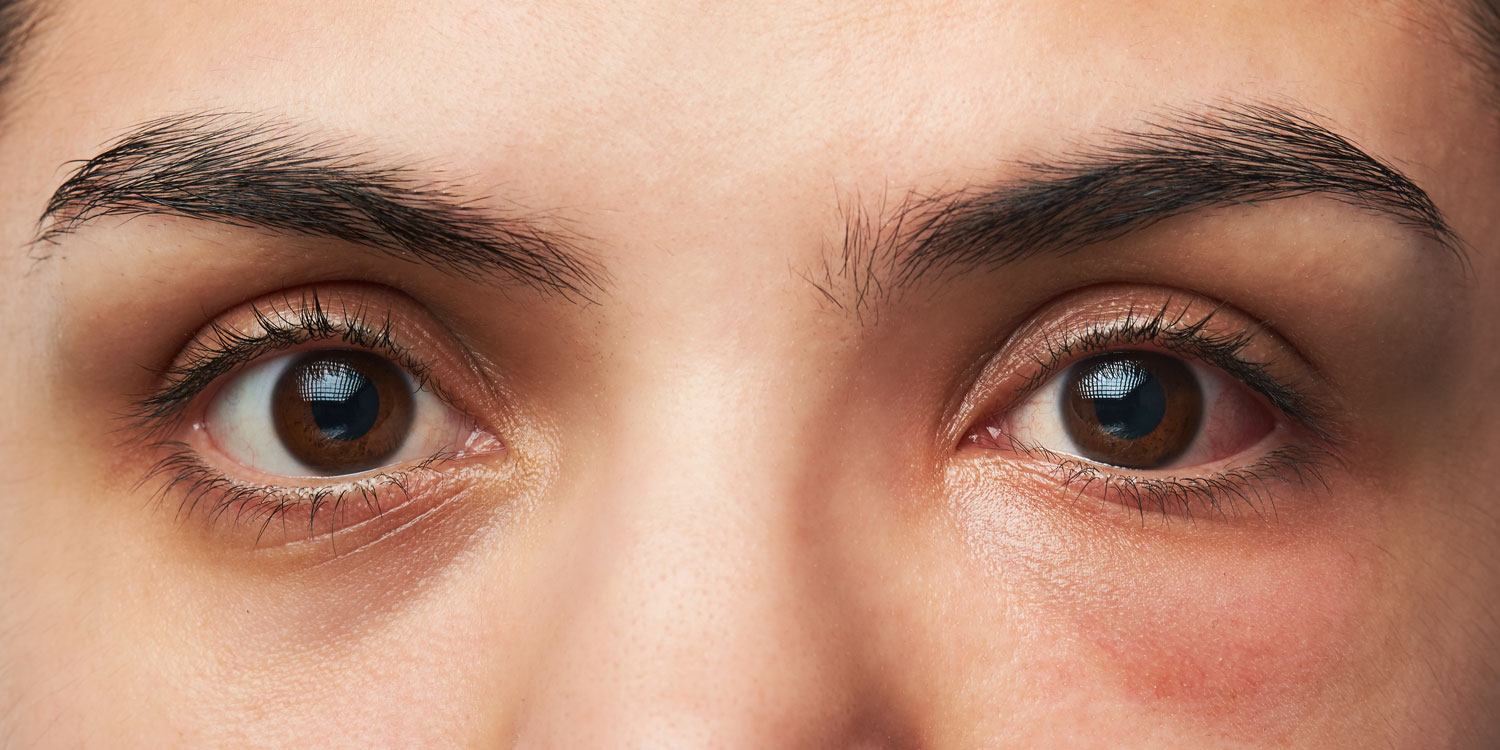
Prevention
A person cannot always avoid chalazia, but they can try:
- cleansing the eyelids daily with baby shampoo or eyelid cleansing wipes
- taking an omega-3 or flaxseed supplement
- asking a doctor about topical or oral antibiotics if chalazia occur often
An allergic reaction to dust, pollen, and other common allergens can cause eye irritation and swelling.
Symptoms include:
- swelling
- itching and burning
- redness
- watery eyes
- a stuffy or runny nose
- sneezing
Treatment
Ways of managing symptoms include:
- applying cool compresses to relieve itching and swelling
- taking antihistamines, such as diphenhydramine (Benadryl)
- using over-the-counter eye drops to reduce dryness and itchiness
- oral prescription medication and eye drops
Prevention
The best way to prevent a reaction is to avoid exposure to known allergens.
People with a seasonal allergy can:
- monitor pollen counts
- wear glasses to prevent contact with pollen
- stay indoors, when possible, when pollen is high
- ask a doctor about allergy shots and other preventive medication
A person with a known allergy should carry an autoinjector in case of a severe reaction. Severe swelling and breathing problems may be signs of anaphylaxis, a life threatening condition that needs emergency medical care.
Severe swelling and breathing problems may be signs of anaphylaxis, a life threatening condition that needs emergency medical care.
Anaphylaxis is a severe allergic reaction that can be life threatening. The symptoms develop suddenly and include:
- hives
- swelling of the face or mouth
- wheezing
- fast, shallow breathing
- a fast heart rate
- clammy skin
- anxiety or confusion
- dizziness
- vomiting
- blue or white lips
- fainting or loss of consciousness
If someone has these symptoms:
- Check whether they are carrying an epinephrine pen. If they are, follow the instructions on the side of the pen to use it.
- Dial 911 or the number of the nearest emergency department.
- Lay the person down from a standing position. If they have vomited, turn them onto their side.
- Stay with them until the emergency services arrive.
Some people may need more than one epinephrine injection. If the symptoms do not improve in 5–15 minutes, or they come back, use a second pen if the person has one.
If the symptoms do not improve in 5–15 minutes, or they come back, use a second pen if the person has one.
Was this helpful?
A person may have “bags under the eyes” for many reasons, including genetic factors. However, a lack of sleep and fatigue can make them appear more pronounced.
Treatment
Applying a cold compress while sitting upright may help relieve symptoms.
Prevention
The following tips may help prevent puffy eyes after sleeping:
- getting enough sleep
- sleeping with the head slightly raised
- limiting salt intake in the diet
- avoiding drinking liquids before sleeping
- quitting or avoiding smoking
Water retention overnight can also affect the eyelids. It can make them look swollen and puffy in the morning, particularly after not sleeping well.
Peripheral edema happens when the body is unable to remove fluid from parts of the body such as the hands, feet, and eyelids. Periorbital edema is when fluid collects around the eyes.
It can be a sign of many health conditions, such as:
- thyroid problems
- kidney or liver disease
- heart failure
- obstructive sleep apnea
- lymphedema
- the use of some drugs
Anyone who has concerned about fluid retention in the eyelids or elsewhere should seek medical advice.
Treatment
Treatment will depend on the cause but may include diuretics, pills that help the body remove fluid.
Prevention
It is not always possible to prevent fluid retention, but here are some ways of reducing the risk of heart disease and other conditions that can cause it:
- following a varied diet with plenty of fruits and vegetables
- limiting salt intake
- having regular exercise
- seeking medical help if symptoms arise that could indicate a problem
- following a doctor’s advice on treatment
Crying can lead to puffiness around the eyes.
The eyes produce tears:
- to lubricate the cornea
- to wash away irritants, for example, dust or onion fumes
- in response to emotional triggers, such as joy or sadness
If the person produces a lot of tears, the lacrimal drainage system, which usually absorbs them, may be unable to cope. This can lead to puffiness.
This can lead to puffiness.
Treatment
A cool compress may help soothe discomfort after crying.
Prevention
If a person finds they are crying more than usual or if crying or sadness is affecting their daily life, they may wish to seek medical advice.
Counseling can help manage depression, grief, anxiety, and other emotional factors that can lead to crying.
Here, learn more about puffy eyes from crying and what to do if they happen.
Makeup and skin care products can cause irritation, swelling, and puffiness in the eyelids for many reasons, for instance, if:
- they contain allergens or irritants
- the person does not remove them before sleeping
- products are not suitable for use around the eyes
- bacteria have developed over time, for example, on mascara
Treatment
Artificial tears can help soothe discomfort, if swelling occurs when using cosmetics.
A person should seek medical advice if symptoms continue or worsen.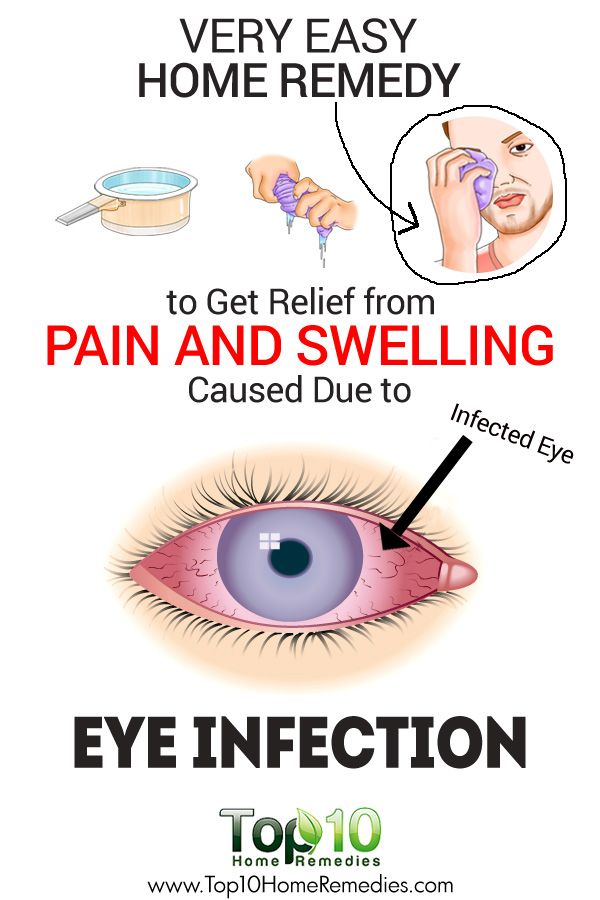
Prevention
To prevent inflammation due to cosmetics, a person should:
- take care to avoid contact between makeup and the eyes
- monitor for sensitivity reactions and introduce new products one at a time
- remove all makeup before sleeping
- choose good quality makeup that is fragrance-free
- replace all eye makeup every 3 months
- avoid sharing products with other people
What is toxic makeup?
Orbital cellulitis is a serious infection that occurs in the bony eye socket, known as the orbit. The most common cause is a bacterial infection of the nasal and sinus passages, or rhinosinusitis. But, it can result from surgery, an immune problem, and other causes.
It can lead to:
- swelling
- redness
- pain, especially with eye movement
- paralysis of the muscles that control the eye
It is essential to seek medical help as soon as symptoms appear. Complications include abscesses, vision loss, and a spread of infection to other areas.
Treatment
A doctor will prescribe antibiotics, possibly for 2–3 weeks or longer.
If an abscess develops and causes severe symptoms, a person may need surgery.
Prevention
People can reduce the risk of severe bacterial infections and their complications by:
- washing their hands regularly
- staying away from other people who have an infection
- seeking help as soon as the symptoms of infection appear, such as a fever
Graves’ disease is an autoimmune disorder that affects the thyroid gland. It can impact the skin, the eyes, and other organs.
Eye symptoms include:
- swollen eyelids
- eye pain
- redness in the conjunctiva
- double vision
- eyelid retraction, where it seems that the eyelids are pulled back
Treatment
Treatment for eye problems related to Graves’ disease will depend on the severity.
They include:
- oral steroids
- other medications, such as rituximab, a monoclonal antibody
- artificial tears
- focal radiation therapy for the eye socket
- surgery, in some cases
Prevention
Factors that may increase the risk of Graves’ disease are:
- a family history of the disease
- smoking
- stress
- infection
- exposure to iodine
- having given birth
- receiving highly active antiretroviral therapy, a treatment for some immune conditions
Quitting smoking may help reduce the risk.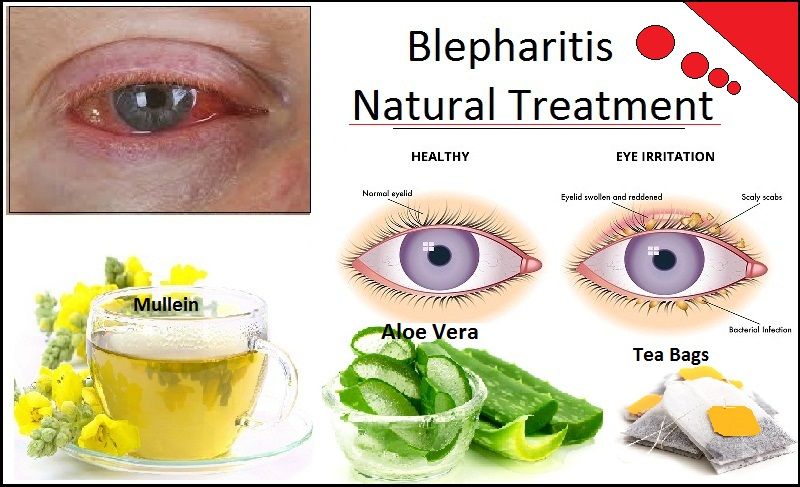
There are many types of herpes virus, and some can cause infections in the eye. Ocular herpes simplex can lead to various eye infections with a range of symptoms.
These can affect the eyelids and other parts of the eye and include:
- irritation and redness
- inflammation of the cornea, the outer cover of the eye
- ulcers of the conjunctiva and cornea
- loss of sensation in the cornea
An initial infection often occurs in children under 5 years of age, but the virus remains in the body and symptoms can recur later.
Treatment
A doctor will take an eye swab to check for the herpes virus.
They may prescribe:
- eyedrops containing antibiotics, steroids, or both
- intravenous medication, in some cases
- lubricating eye drops to help manage dry eye
- antiretroviral therapy to prevent recurrences and complications
- surgery, in some cases
Prevention
The herpes simplex virus is very common, and infection is hard to prevent.
Adults can help protect newborns by avoiding kissing them on the mouth.
Some people may need long-term antiretroviral drugs to manage the virus and help prevent a recurrence.
Blepharitis is an inflammation of the margins of the eyelids. It can result from a bacterial or viral infection or exposure to an allergen. Some people experience it only once, but it is usually a long-term condition in which symptoms improve and then flare up again.
Blepharitis can affect the eyelids in the following ways:
- inflammation
- burning
- itching
- crusting
- ulceration, in some cases
- dandruff-like flakes around their eyelashes
- blurred vision
- feeling that something is in the eye
- loss of eyelashes
Treatment
A person should do the following two to four times per day during a flare to keep the eyelids clean:
- Apply warm, wet compresses to the eyes for 5–10 minutes to soften debris and dilate the oil glands that line the eyelids.

- Wash the eyelid margins gently with a cotton bud soaked in water with a little baby shampoo.
- Gently massage the eyelids, making circular movements with a cotton bud or fingertip, to stimulate the oil glands.
A doctor may also recommend:
- antibiotic cream to apply to the eyelid
- topical steroids
- a tea tree oil eyelid scrub
- newer therapies, such as pulsation therapy, which uses heat to help remove debris from the oil glands
Prevention
It is not always possible to avoid blepharitis.
Options include:
- avoiding triggers that cause or worsen symptoms
- limiting the use of makeup
- regularly carrying out the hygiene steps above to prevent recurrence in people with chronic blepharitis
When a tear duct is blocked, the eye cannot fully drain tears. According to the American Academy of Ophthalmology, 20% of newborns have a blocked tear duct, but it usually resolves in 4–6 months.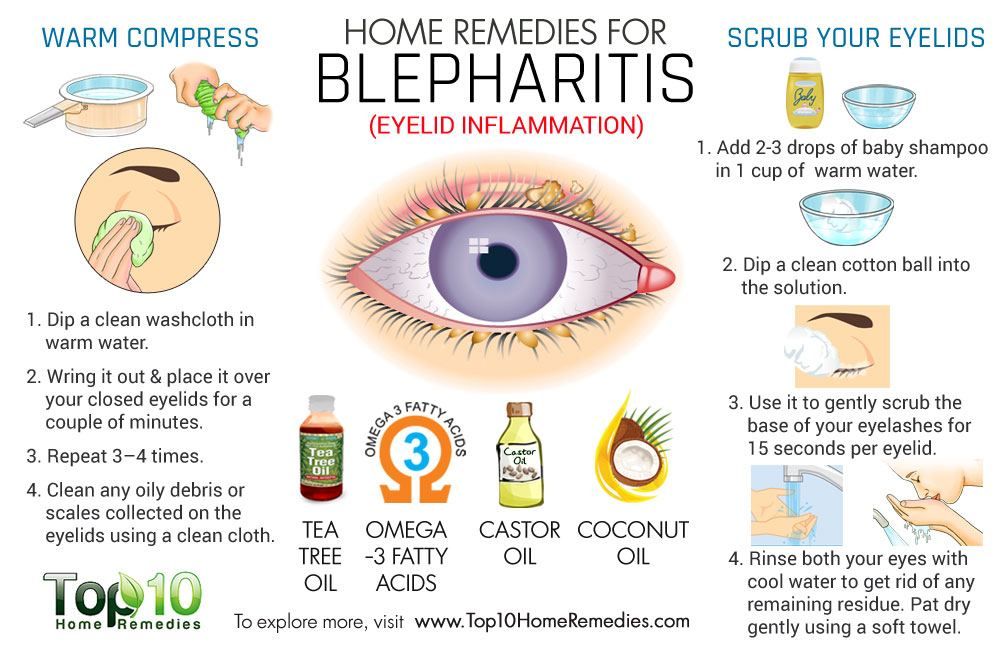 In adults, it may stem from an infection, tumor, injury, or other cause.
In adults, it may stem from an infection, tumor, injury, or other cause.
Symptoms include:
- inflammation, especially in the inner corner of the eye
- discharge
- crusty eyelashes
- blurred vision
- traces of blood in tears
- a fever
- frequent infections
Treatment
Often, a blocked duct will open without intervention.
For a newborn, a doctor may teach a caregiver how to do a special massage to encourage the duct to open.
If the duct does not open, a brief duct probing procedure may be necessary to restore drainage.
Prevention
It is not possible to prevent a blocked tear duct. However, if symptoms worsen or there are signs of an infection, such as a fever, they should seek medical help.
Conjunctivitis, or pink eye, is an inflammation of the conjunctiva. This is the clear, thin tissue that lines the eyelid and eyeball.
Possible causes include:
- a viral, bacterial, or fungal infection
- an allergic or sensitivity reaction
- exposure to toxins or irritants
A person may notice:
- swollen eyelids
- a pink or red eyeball
- itching
- pain
- discharge
Treatment
Conjunctivitis usually resolves in 1–2 weeks but may take longer. Some people have chronic conjunctivitis, which lasts longer than 4 weeks.
Some people have chronic conjunctivitis, which lasts longer than 4 weeks.
Tips for managing pink eye at home include:
- applying cold compresses to relieve discomfort
- using artificial tears
- keeping the eye clean and free of makeup
- avoiding rubbing or touching the eye
- washing the hands frequently to prevent the spread of the infection
The person should see a doctor if:
- symptoms get worse
- the pain becomes severe
- pink eye does not clear up in 2 weeks
The doctor may prescribe:
- antibiotic drops or ointments, in the case of a bacterial infection
- antiviral therapy, in some cases
- topical antihistamines, if it is due to an allergy or irritant
Prevention
Here are some tips for preventing conjunctivitis and other eye infections:
- avoiding touching the eyes, and washing the hands first if it is necessary
- replacing all eye makeup after 3 months
- avoiding sharing makeup and personal items, such as towels, with other people
Here are some questions people often ask about a swollen eyelid.
When should a person see a doctor for a swollen eyelid?
People should see a doctor if they have a fever or signs of an infection, if there is pain when shifting eye gaze, if symptoms are severe or worsening, if symptoms persist longer than 48-72 hours, or if their vision has changed.
How do you treat a swollen eyelid?
The treatment will depend on the cause. A doctor can advise on a suitable approach.
Is a warm or cold compress better?
In some cases, such as after crying or having an allergic reaction, a cool compress wrapped in a cloth may help reduce swelling. Other conditions, such as a chalazion, may benefit from a warm compress.
A swollen eyelid can happen for many reasons, ranging from tiredness to an infection. If symptoms are severe, persistent, or could indicate an infection, the person should seek medical help.
Some eye conditions can lead to severe complications, including vision loss.
If a person is unsure, they should never hesitate to seek medical consultation to protect their health.
Read the article in Spanish
Macular retinal edema – signs, symptoms, diagnosis, treatment
Contents
- Causes
- Signs of pathology
- Diagnosis
- Treatment
- Central vision becomes blurred.
- Images of visible objects are distorted, straight lines appear to be curved and wavy.
- Images appear pink.
- Photophobia occurs.
- At certain times (often in the morning) visual acuity may decrease cyclically. Changes in refraction do not exceed 0.25D.
- During the day, color perception changes quite rarely.
900 15
Macular retinal edema is a symptom of a number of eye diseases, in which there is an accumulation of fluid in the tissues of the central zone of the retina, the so-called yellow spot (macula), which is responsible for central vision.
Macular edema often occurs with eye injuries and eye surgery. In addition, it accompanies such diseases as diabetic retinopathy, uveitis, retinal vein thrombosis.
Causes
The accumulation of fluid in the tissues of the macular area of the retina, causing macular edema, has various causes, but in all cases it is manifested by a decrease in visual acuity.
The pathology was first described by S.R. Irvine in 1953, when edema developed in the postoperative period of cataract surgery.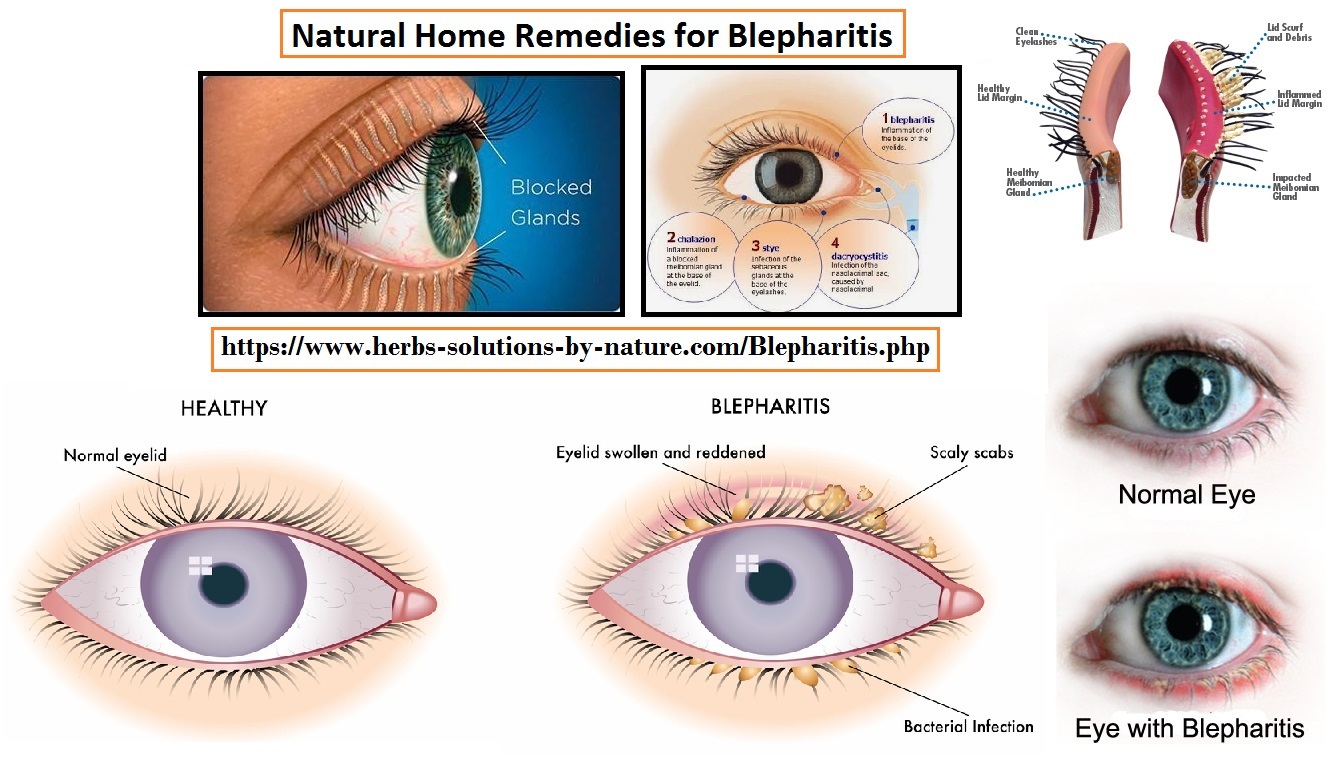 Since then, this postoperative complication has been called the Irwin-Gass syndrome. The pathogenesis and causes of its occurrence to this day raise a lot of questions, but it is known for certain that its frequency is directly related to the type of surgical intervention. Thus, in the postoperative period of extracapsular cataract extraction, the risk of its occurrence is 2–6.7%, which is statistically higher than, for example, with intracapsular extraction.
Since then, this postoperative complication has been called the Irwin-Gass syndrome. The pathogenesis and causes of its occurrence to this day raise a lot of questions, but it is known for certain that its frequency is directly related to the type of surgical intervention. Thus, in the postoperative period of extracapsular cataract extraction, the risk of its occurrence is 2–6.7%, which is statistically higher than, for example, with intracapsular extraction.
In the case of diabetic retinopathy, the edema is due to impaired vascular permeability of the capillary network. The effusion of the liquid part of the blood seeps through the defective walls of the vessels and accumulates in the tissues of the layers of the retina. Thrombosis of the retinal veins (central artery, branches) also leads to excessive permeability of the vascular wall, which provokes the release of fluid; it leaks into the perivascular space and provokes swelling of the central zone of the retina.
Macular edema often accompanies vitreoretinal traction.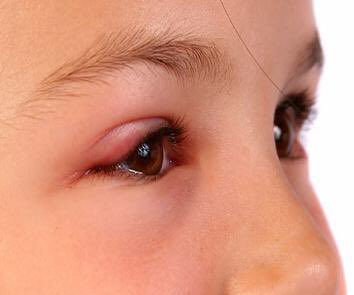 Tractions are coarse strands that form between the retina and the vitreous body during injuries, as well as inflammatory and vascular diseases of the eyes. In this case, the vitreous begins to retract the retina, its edema develops, and under some circumstances, rupture and detachment of the retina occurs.
Tractions are coarse strands that form between the retina and the vitreous body during injuries, as well as inflammatory and vascular diseases of the eyes. In this case, the vitreous begins to retract the retina, its edema develops, and under some circumstances, rupture and detachment of the retina occurs.
Signs of pathology
The clinical picture of macular edema in different diseases has its own distinctive features, but in all cases it is accompanied by the following symptoms:
Uncomplicated cases of macular edema, for example, after surgery, do not usually lead to complete loss of vision, but its recovery is slow – from several months to a year or longer. But macular edema, existing long enough, can cause irreversible changes in the retina that impair vision irreparably.
But macular edema, existing long enough, can cause irreversible changes in the retina that impair vision irreparably.
Macular edema accompanying diabetic retinopathy is divided into focal and diffuse. Diffuse edema is characterized by thickening of the retina by two or more diameters of the optic nerve head located in the center of the macula. Focal edema does not involve the central area of the retina and is significantly less than two diameters of the ON disc. With a long-term diffuse edema, there is often a significant decrease in visual acuity, which often leads to serious complications – degeneration of the pigment epithelium, epiretinal membrane, macular rupture of the retina.
Diagnosis
Identification of macular edema is usually not without examination of the fundus (ophthalmoscopy), although this procedure can only reveal severe pathology. If the edema is insignificant, this complicates the task. It is easiest to suspect the initial stage of edema of the central region of the retina by the dullness of the lesion.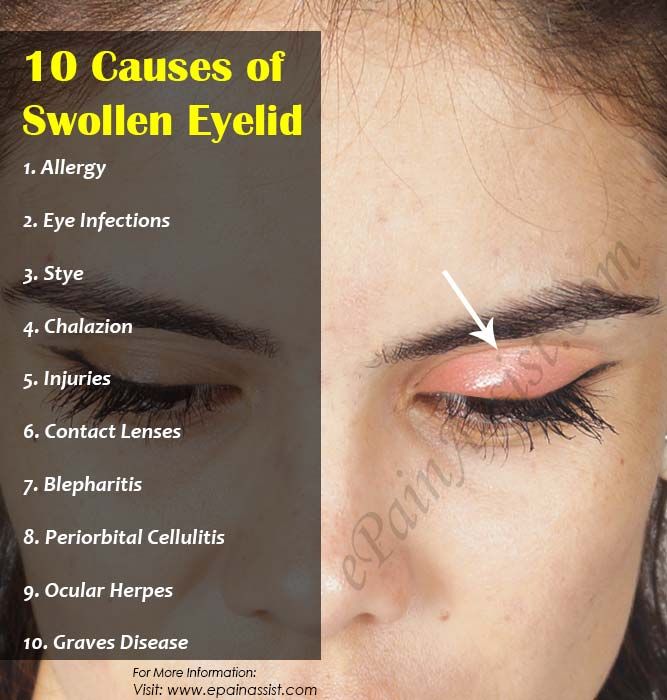 At the same time, its sign is the bulging of the macula region, determined by the special bending of the macular vessels, which is visualized when examining the fundus with a slit lamp. Flattening of the fovea may also be noted, as evidenced by the absence of a foveolar reflex.
At the same time, its sign is the bulging of the macula region, determined by the special bending of the macular vessels, which is visualized when examining the fundus with a slit lamp. Flattening of the fovea may also be noted, as evidenced by the absence of a foveolar reflex.
In modern ophthalmology, there are more accurate diagnostic methods that can detect even minimal morphological changes in the retina. One of these methods is considered to be OCT (optical coherence tomography), which is part of our services for computer vision diagnostics. Conducting this study allows you to evaluate the thickness of the retina, its volume, see the structure, compare vitreoretinal ratios.
Heidelberg retinal tomography (HRT) can also help detect macular edema even at an early stage. The study makes it possible to carry out an assessment of its thickness (edema index). True, a serious disadvantage of HRT is the impossibility of assessing the structure of the retina.
FAG (retinal fluorescein angiography) is another accurate way to confirm macular edema. The procedure involves the study of retinal vessels with intravenous administration of a contrast agent. In this case, the edema zone is identified by contrast scattering. The FAG method especially accurately determines the vessel – the source of fluid release.
The procedure involves the study of retinal vessels with intravenous administration of a contrast agent. In this case, the edema zone is identified by contrast scattering. The FAG method especially accurately determines the vessel – the source of fluid release.
Treatment
According to the indications, the treatment of macular edema is carried out by several methods: conservative, laser, surgical. The causes of edema and the time of its existence are decisive in the tactics of managing patients.
In case of conservative therapy, anti-inflammatory drugs in eye drops, injections, tablets are recommended. Often, these are steroids, as well as non-steroidal anti-inflammatory drugs. Among the advantages of their use is the absence of side effects of steroids: a decrease in local immunity, an increase in the level of IOP, and ulceration of areas of the cornea devoid of epithelium. The use of non-steroidal anti-inflammatory drugs in the preoperative period increases the effectiveness of cataract surgery.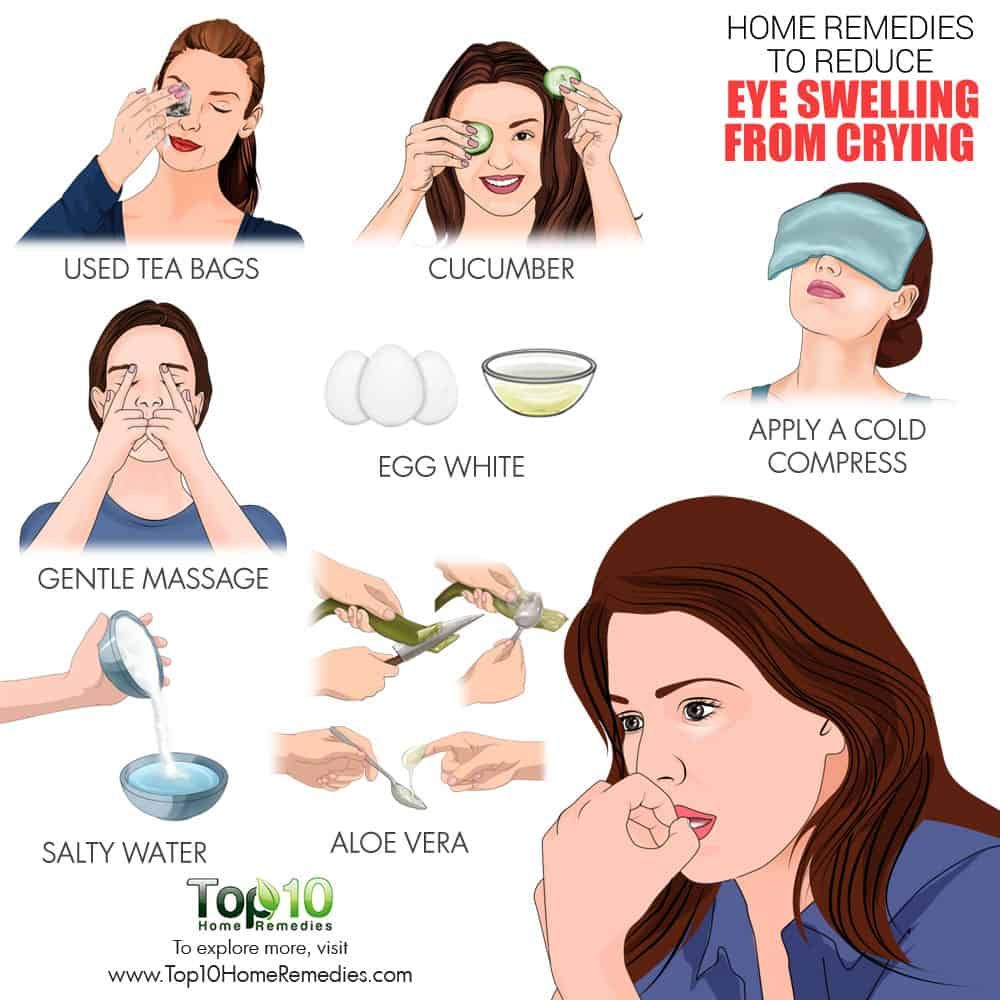 Instillations of non-steroidal anti-inflammatory drugs are usually prescribed shortly before surgery. Along with corticosteroids, they are prescribed in the postoperative period at the risk of inflammatory reactions.
Instillations of non-steroidal anti-inflammatory drugs are usually prescribed shortly before surgery. Along with corticosteroids, they are prescribed in the postoperative period at the risk of inflammatory reactions.
The lack of effect of conservative therapy requires the introduction of therapeutic drugs (usually long-acting steroids or drugs for intravitreal administration) directly into the vitreous body.
Tractions and epiretinal membranes in the vitreous body are an indication for performing an operation to remove the vitreous body (vitrectomy). The only possible effective method of treating macular edema in diabetes is laser coagulation of the affected areas of the retina. Laser coagulation is especially effective for focal macular edema. At the same time, many experts argue that with diffuse edema, even laser treatment will not bring the desired effect, and the prognosis for visual function is unfavorable.
Laser coagulation for macular edema is performed to “weld” defective vessels, the walls of which allow the effusion of the liquid part of the blood to pass through. It is carried out along the periphery of the macular zone, without affecting the central region.
It is carried out along the periphery of the macular zone, without affecting the central region.
The prognosis for visual functions in macular edema is closely related to the etiology of the disease, against which it arose and the timeliness of the treatment started. As a rule, a particularly good prognosis for treatment of postoperative macular edema. For their complete disappearance, several months are required, after which, visual functions, as a rule, are completely restored.
It must be understood that the key to successful treatment is timely seeking medical help. Even if the patient has been observed by an ophthalmologist for a long time, one should not neglect insignificant, but new signs and symptoms. You need to be extremely careful about the health of your eyes.
Eyelid edema: causes and treatment
Eyelid edema is one of the most common aesthetic problems that patients visit an ophthalmologist for. Edema can be unilateral or bilateral, asymptomatic or accompanied by itching, redness, and pain.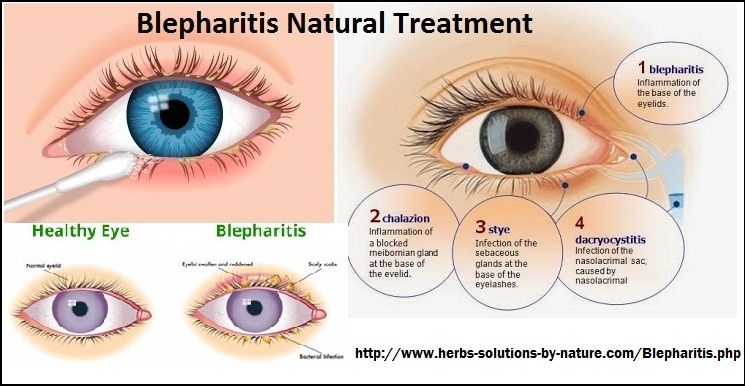 Let’s try to understand the causes of edema and how to treat it.
Let’s try to understand the causes of edema and how to treat it.
Contents
Causes
Danger symptoms
Diagnostics
Treatment
Causes
Eyelid edema manifests itself in many pathologies – systemic diseases, injuries, inflammation of the tissues of the orbit, diseases of the eyelids, lacrimal organs and conjunctiva.
Allergy – contact dermatitis, insect bite, angioedema, hay fever accompanied by itching and lacrimation. One or both eyelids appear swollen and pale. Pollinosis often occurs with a runny nose, and angioedema can spread to the larynx and cause suffocation.
Acute blepharitis – red, itchy and swollen edges of the eyelids with ulcers and crusts. Often combined with herpes, staphylococcal and seborrheic dermatitis. May be unilateral or bilateral.
Barley – unilateral microbial inflammation of the ciliary follicle.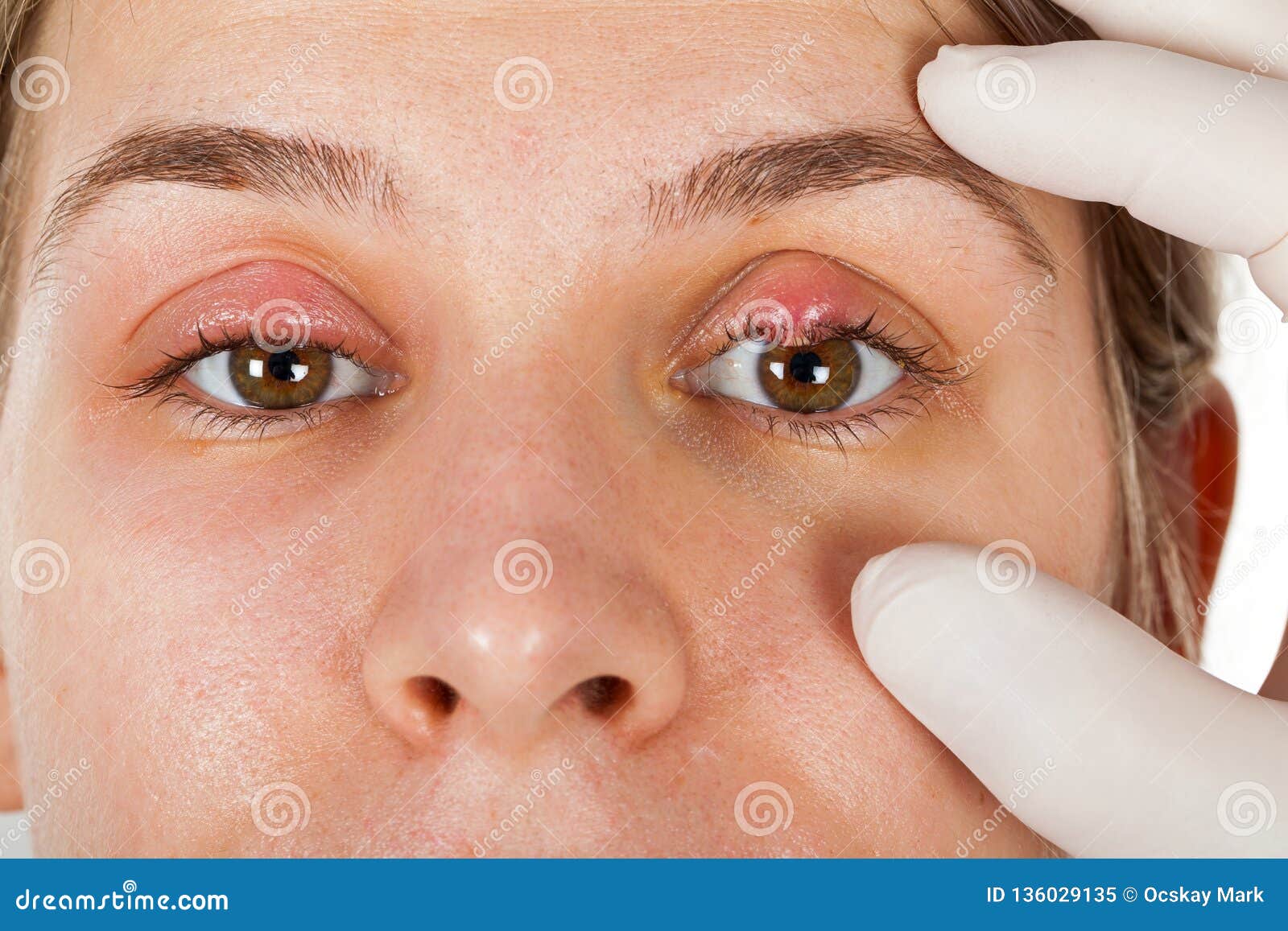 It looks like a red, painful elevation on the ciliary edge of the eyelid, in the center of which an eyelash grows.
It looks like a red, painful elevation on the ciliary edge of the eyelid, in the center of which an eyelash grows.
Chalazion – looks like a local swelling in the middle or at the edge of the eyelid. In fact, these are enlarged glands that are felt under the fingers like a dense, painless ball. Sometimes it can be complicated by bacterial inflammation. Almost always unilateral.
Conjunctivitis – inflammation of the mucous membrane of the eye. Usually bilateral, but may start in one eye and then move to the other. Edema of the eyelids accompanies conjunctivitis, but redness of the eyeball and mucopurulent discharge come to the fore.
Dacryocystitis – inflammation of the lacrimal sac. Swelling, pain and redness appear under the inner corner of the eye. The nasolacrimal canal becomes impassable, so lacrimation appears. The lacrimal sac may suppurate with the development of an abscess, edema spreading to the lower eyelid, discharge of pus from the lacrimal ducts, or rupture through the skin.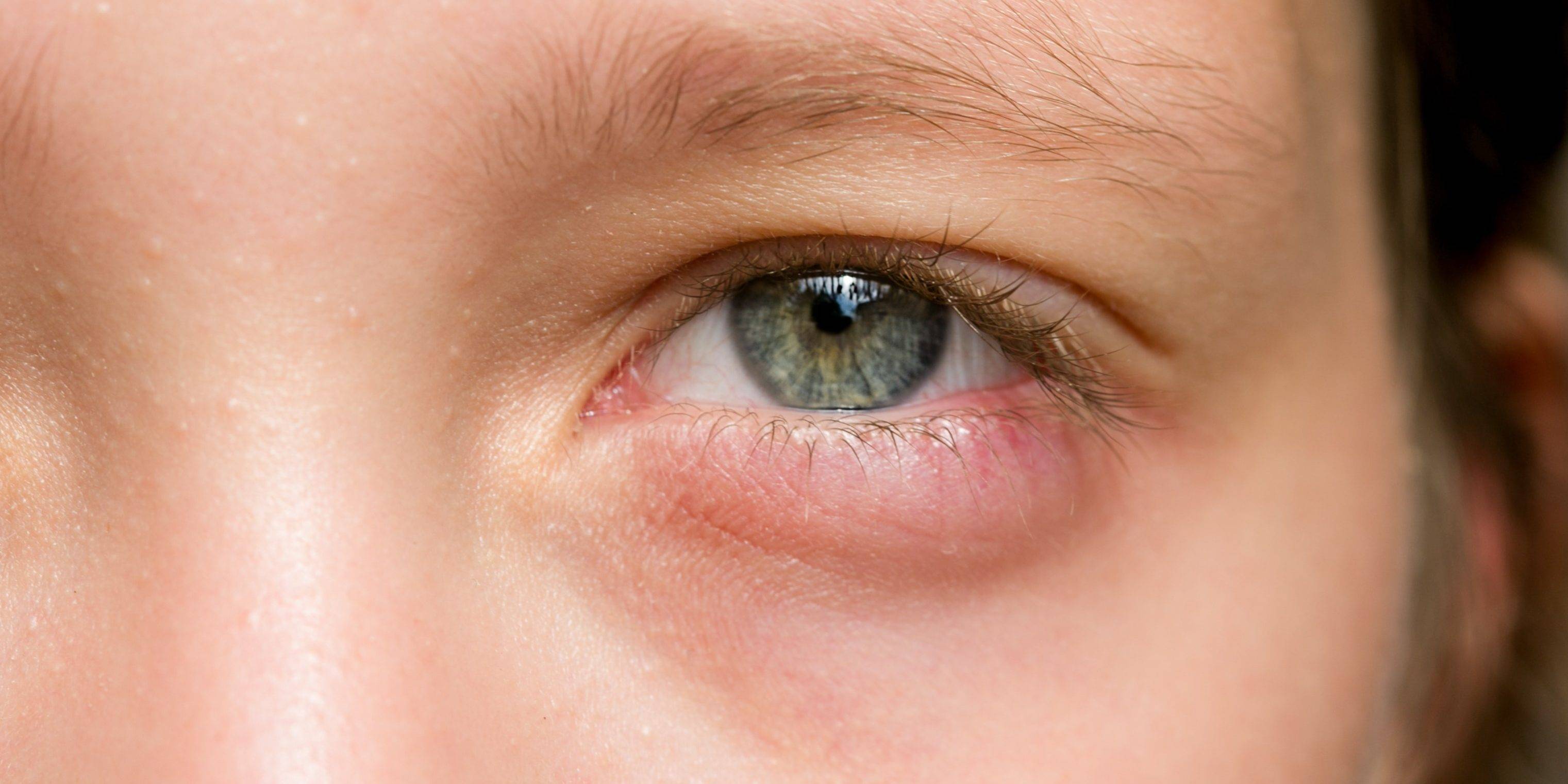
Canaliculitis — microbial inflammation of the lacrimal ducts. Inflammation of the upper tubule is accompanied by swelling and redness of the upper eyelid at the inner corner of the eye, inflammation of the lower tubule is accompanied by swelling and redness of the lower eyelid. In addition, lacrimation and mucopurulent discharge from the eye are disturbing.
Inflammation of the eyelids and conjunctiva is mild and rarely threatens vision. Tumors of the eyelids, injuries and diseases of the orbit, on the contrary, are very dangerous.
Dacryoadenitis – inflammation of the lacrimal gland. Accompanied by swelling, redness and soreness of the outer part of the upper eyelid, lacrimation and enlargement of the anterior lymph nodes. The patient develops weakness, body temperature rises. Over several days, the swelling increases and may close the eye or cause double vision and headache.
Malignant tumors of the eyelids (for example, squamous cell carcinoma or melanoma) form ulcers on the skin of the eyelids, impede the outflow of lymph and venous blood, which leads to edema.
Cavernous sinus thrombosis is a blockage of a large vein at the base of the skull that collects blood from the face and eyes. Severe disease, which is manifested by headache, protrusion and immobility of the eyeballs, severe swelling and redness of the eyelids, decreased visual acuity, fever. Thrombosis begins as unilateral edema, then the second eye joins.
Sinusitis – inflammation of the paranasal sinuses. It usually proceeds without external manifestations, but in severe cases it can give swelling of the upper (frontal) or lower eyelid (sinusitis).
Orbital cellulitis – purulent inflammation of the adipose tissue of the orbit after insect bites, injuries and sinusitis. It is characterized by unilateral protrusion and immobility of the eyeball, dense swelling and redness of the eyelids, fever, pain, blurred vision.
Periorbital cellulitis – purulent inflammation of the skin and fatty tissue of the eyelids without spreading into the orbit. Swelling and redness of the eyelids is present, but unlike orbital cellulitis, the eyes do not protrude, move in full and there is no pain during movements, vision remains high.
Swelling and redness of the eyelids is present, but unlike orbital cellulitis, the eyes do not protrude, move in full and there is no pain during movements, vision remains high.
Endophthalmitis – inflammation of the tissues and fluid inside the eye. Inflammation is accompanied by pain in the eye, loss of vision, redness of the eyeball and swelling of the eyelids, which appear after surgery, injection or eye injury.
Chronic kidney disease, heart failure, liver failure, preeclampsia cause symmetrical painless congestive edema, more noticeable after sleep. In the initial stages, when a person moves from a horizontal to a vertical position, the swelling gradually decreases. In later stages, they become permanent.
Hyperthyroidism – elevated levels of thyroid hormones leading to endocrine ophthalmopathy. The condition is accompanied by tachycardia, anxiety, weight loss, swelling of the eyelids, conjunctiva, redness of the eyeballs and skin around the eyes.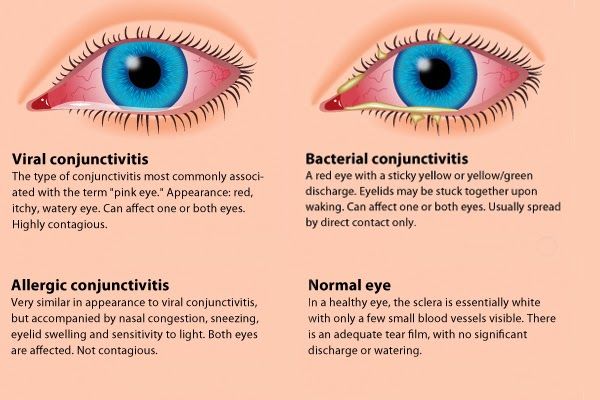
Hypothyroidism – low level of thyroid hormones. It is characterized by constant painless bilateral swelling of the face, depressed mood, fatigue, apathy, cold intolerance.
Fracture of the base of the skull leads to bleeding from the nose and ears, impaired hearing, vomiting, impaired vision due to infringement of the optic nerve, swelling of the eyelids and hemorrhages under the skin around the eyes.
Eye surgery causes temporary swelling of the eyelids in response to surgical trauma. Such edema subsides on its own in a few days.
Some drugs cause eyelid swelling due to allergy or fluid retention: acetaminophen, acyclovir, amiodarone, aspirin, bacitracin, brimonidine, carbamazepine, contact lens solutions, dorzolamide, erythromycin, fluoroquinolones, estrogens, steroids, ibuprofen, indomethacin, insulin, pilocarpine .
Immunizations against diphtheria, tetanus, whooping cough, measles, mumps, rubella, poliomyelitis, rabies, tetanus toxoid and tetanus immunoglobulin.


